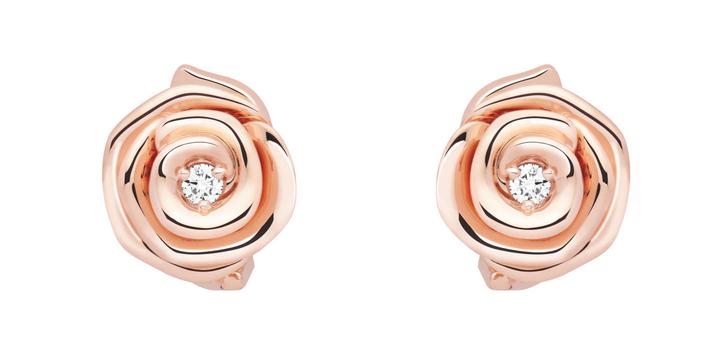Jewelry: when gems change range<
On the walls of the living room, in the boutique on rue de la Paix, in Paris, are framed gouaches taken from the archives. Sparkling tiaras, precious 18th century adornments, majestic pieces… If Mellerio, a house founded in 1613 and still independent – a rarity in the high jewelery sector, dominated by the Swiss group Richemont and the French LVMH – has often adorned crowned heads and nomenklatura, it has nevertheless been engaged for several weeks in an effort of democratization. Its new collection, baptized Les Muses, draws briskly from the Renaissance or Art Nouveau motifs of its heritage, but has been produced in pink gold in Italy, to be less expensive.
A necklace in homage to George Sand can be purchased for 650 euros; a cross-shaped diamond ring for 790 euros. "For me, who likes volume, finesse, color, designing accessible is more difficult than creating high jewelry," admits Laure-Isabelle Mellerio, president and artistic director. You have to know how to listen to the instructions of the marketing department, take care of the required dose of gold, marry the constraint while remaining careful that it does not seem approximate or at a discount. »
Like Mellerio, many producers of fine jewelry, Place Vendôme vessels or luxury fashion houses, bet on more “accessible” lines. Between 500 euros and 4,500 euros per piece all the same, privileges of the upper classes, but far from the insane six or seven-figure prices of their fine jewelry. In 2021, the behemoth Cartier for example launched Les Berlingots, Art Deco rings and necklaces in hard stones (chalcedony, malachite, onyx) sold from 3,050 euros; Gucci, Link to Love, angular rings from 790 euros; Dolce & Gabbana, Alphabet, letters in gold charms and fine stones (amethyst, citrine, peridot, etc.) marketed from 1,050 euros.

Of course, this desire for democratization is not new. “In the post-war period, jewelers wanted to reach the new generation which was emancipating itself from a paternalistic society. As early as 1954, Van Cleef & Arpels opened La Boutique, a dedicated space with affordable jewellery, recalls Marion Mouchard, doctoral student in art history, external researcher for L'Ecole des arts joailliers. Similarly, in 1969, Chaumet opened L'Arcade”, whose advertisements at the time promoted chains and “lovely little rings from 1,500 francs”. “This phenomenon unfolded in the 1980s, when having branded jewelry became an important criterion,” continues Marion Mouchard.
You have 70.8% of this article left to read. The following is for subscribers only.


 Tags:
Tags: Prev
Prev







